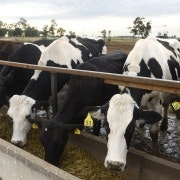Australia's banks are bleeding hot money
The most recent statement from the US Federal Reserve Board’s open market committee was released on May 1. Since then the four major Australian banks have lost about $40 billion of market capitalisation. It’s not a coincidence.
Neither is it a coincidence that the steep falls in the banks’ share prices – the range is from about 8.5 per cent to more than 13 per cent – and a somewhat smaller and later fall in Telstra’s share price occurred even as the Australian dollar cracked and fell from just under $US1.04 to just over $US96 cents today.
The sell-off of the banks over the past four weeks also makes UBS’ Jonathon Mott look prescient, given that only days before the FOMC statement he had argued that the Australian banks’ share prices were in 'bubble' territory, with their prices and price-to-earnings ratios inconsistent with the environment in which they were operating. If there was a bubble, it has been deflating.
The FOMC statement was interpreted by the market that a tapering of the Fed’s $US85 billion a month bond and mortgage-buying program was likely to begin earlier than previously anticipated, perhaps in the second half of this year.
Given that the near costless credit and liquidity the Fed, the European Central Bank and the Bank of Japan have been pumping into the global financial system has spawned a multitude of carry trades and a global search for yield, even the slightest prospect that the US might begin scaling back its quantitative easing program was likely to spark a rush for the exits from those trades.
The Australian dollar had been pumped up partly by the massive inflows of foreign capital seeking positive yields, as had the value of the banks.
The four majors, with Telstra and the two big miners, dominate the Australian market – they represent nearly half the entire market’s value.
With commodity prices having slumped and the miners’ profitability savaged as a result of those price falls they haven’t been a safe leg for a carry trade. The banks, with their high yields, the deep liquidity in the markets for their shares and their robust balance sheets and earnings, were attractive repositories for some of that hot money.
The deflation of the banks’ share prices this month – whether they were previously in bubble territory or not – and the sharp fall in the value of the Australian dollar can therefore be explained as a side-effect of a shift in global flows of funds.
The extent of the declines might also have been driven by hedge funds that are thought to have taken up short positions against the Australian dollar and the banks in expectation of significant corrections the moment the Fed’s previous musings about the future of its bond-purchasing program started to take on a more definitive tone.
A concern raised by the scale of the reversion in the banks’ prices is that at this point the Fed’s intentions remain opaque. It has said it is open to either winding the program back or maintaining it – or winding it back and subsequently scaling it back up if necessary.
When it becomes certain that the Fed is exiting the program and the carry trades have all been reversed the market and the banks will have to stand on their own fundamentals within a softening economy where demand for credit is weak, where bad and doubtful debt experience is about as low as it can get and where unemployment will edge up as both the resource and non-resource sectors of the economy continue to shift into cost-cutting mode.
That could have negative implications not just for the banks and Telstra but for the market-at-large, given that it has been driven up – as have most developed economy markets – by the global tide of liquidity.
While all the banks are in sound condition the falls in their value in recent weeks is an unpleasant reminder to investors, and retail investors in particular, that while yield is one aspect of the investment equation the security of the capital deployed to get access to that yield is another.
















